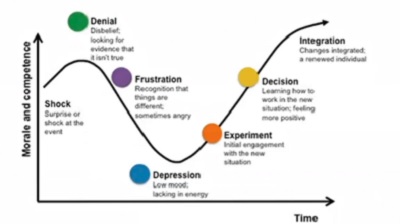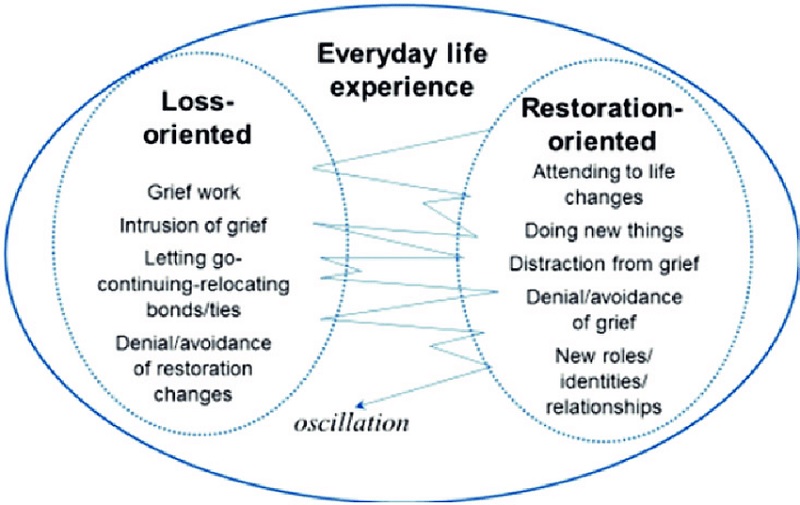More On The Grief Cycle
Introduction
The Kubler Ross change framework (1969) was one of the first to focus on the human side but it was not designed for organisational change. It was designed for those who have a terminal illness, ie to humanise the end-of-life experience!!!
Despite this, it has been used in organisational change as it offered a predictable and controllable sequence of events, or road map, for people to progress through a change process from shock to integration. It is incorrectly assumed that this predictability and control makes it easier to design change processes.
Instead it normalises experiences that can be perceived as negative and allows for these emotions to be expressed
It is useful in some situations.
Limitations
But despite its benefits, there are some limitations, ie
- it was originally designed to explain the experience of dying, not that of those grieving their death nor organisational transitions, like IT
- it creates false expectations of what happens during change like blame, judgement, shame, guilt, etc
- it can damage the psychological safety of work place
- focuses on doing change 'to' rather than 'with'
- pushes people through a set process, especially the first 4 stages, as quickly as possible
- it assumes that change is both predictable and controllable
- it can increase resistance
- can increase the cost of change initiatives, eg cost of staff turnover, burnout, etc
- no 'one-size' fits all situations or people, etc
Not meant to put messy emotions into a neat packages, ie no typical response as we are all unique individuals who can respond differently

(source: Jacqueline Kappers, 2022)
Duel Process
A variation of Kubler Ross change framework is the Duel Process model handling grief like bereavement, ie state of loss. It can be a combination of accepting and confronting it.
It explains
"...how a combination of both emotional catharsis and changing perspective can be a good and healthy process. Being able to confront the situation and also deal with everyday life events allows the person to live their lives with desired states of stability in a subjective post-loss world in which the bereaved person finds themselves..."
Parkes as quoted in Wikipedia, 2022
Grief is associated with loss of something or someone.
People vary in the way they cope, or respond to, grief. It has been found
"...Acknowledging it and allowing themselves to go through the motions will allow them to cope in a healthy way. To cope with the loss, the person is required to relearn the world around them and simultaneously make a multi-faceted transition from loving in presence in absence..."
Attig as quoted in Wikipedia, 2022

(source: Jacqueline Kappers, 2022)
The above diagram has 2 phases:
i) loss oriented phase (focuses on coping with bereavement, ie the loss itself, recognising and accepting it; there will be many changes in your lives as a result; there will be much yearning, irritability, despair, anxiety, depression, etc; need to reflect on your experiences)
ii) restoration oriented phase (loss is accepted and attachments are relinquished; focus on new roles; it incorporates endurance through reconstruction of a perspective by taking over the grieving thoughts, which are adjusted and adapted by creating a new meaning; it is a confronting process that allows a person to adjust to the new reality; emotions can oscillate between pride and grief; as time goes on, there is less grieving
"...the process of reflecting on and making meaning of emotional experiences leads to growth in resilience, psychological flexibility, increased community engagement and greater solidarity..."
Wikipedia, 2022
NB You will oscillate between these 2 states, ie loss oriented and restoration oriented
